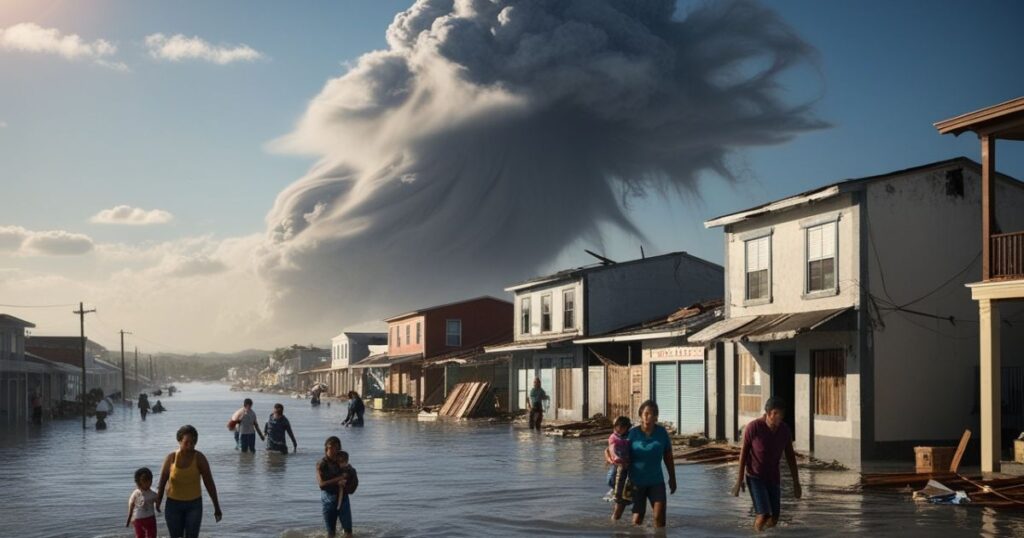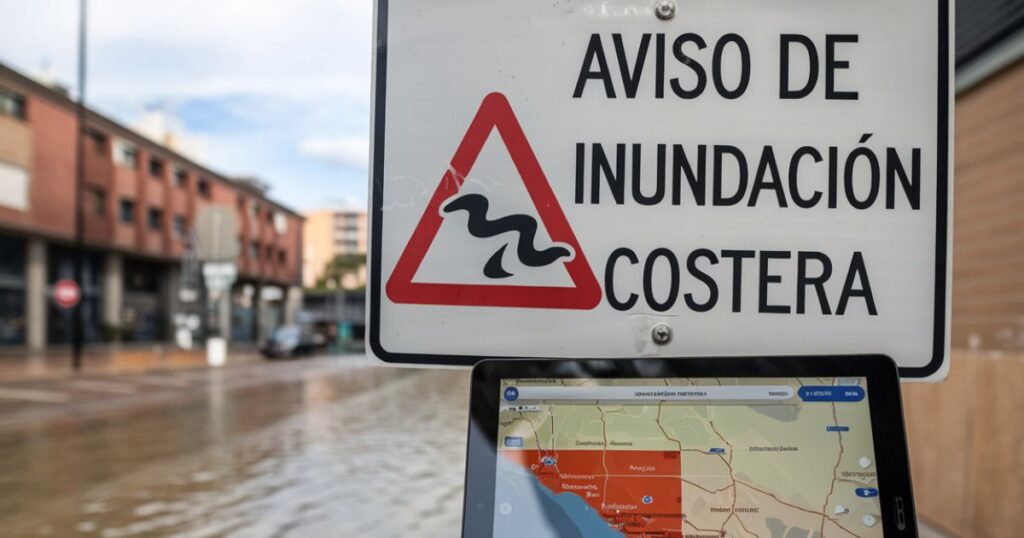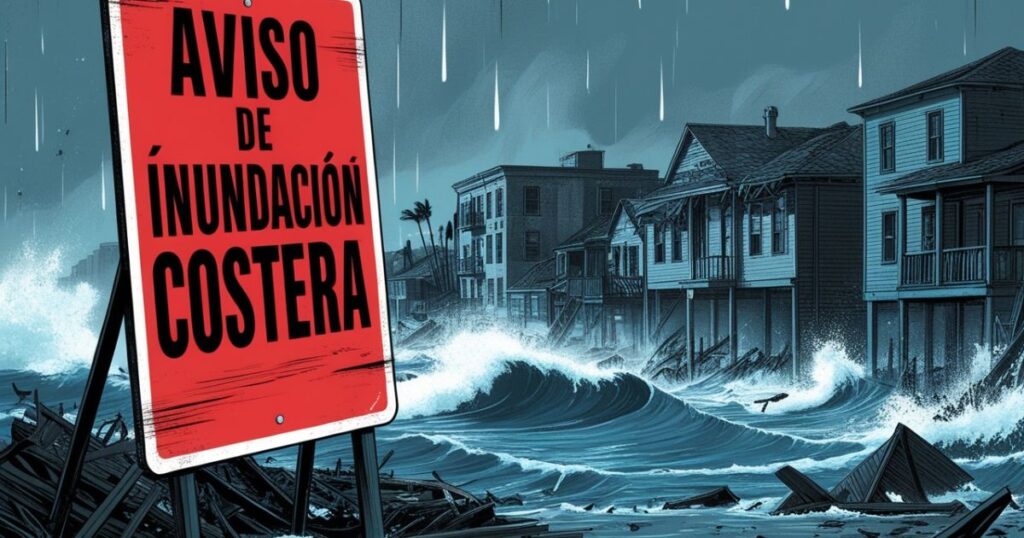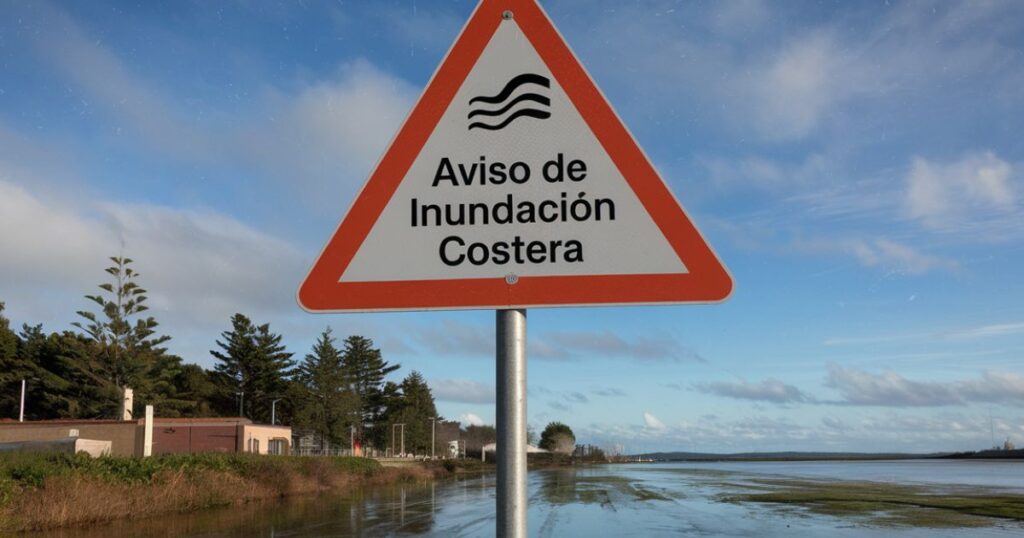What is an Aviso de Inundación Costera?
An aviso de inundación costera, or coastal flooding alert, represents a critical warning system implemented by meteorological agencies to protect lives and property in vulnerable coastal areas.
These alerts serve as an essential communication tool, designed to inform residents about imminent flooding dangers caused by rising sea levels and storm surges. The system has become increasingly vital as climate change continues to impact our coastlines, leading to more frequent and intense severe weather events.
The warning system typically operates on two distinct levels, each serving a specific purpose in the emergency response framework. The first level, known as a watch, indicates that environmental conditions are favorable for coastal flooding to develop within the next 24-48 hours.
This early notification allows coastal communities to begin their preparation processes and stay vigilant about changing conditions. The second level, a warning, signifies immediate danger, indicating that flooding is either already occurring or will occur within hours, requiring immediate protective actions.
Understanding the triggers for these alerts is crucial for both authorities and residents. Meteorological conditions such as high winds, low-pressure systems, and heavy rainfall often combine to create dangerous flooding scenarios.
These conditions are frequently exacerbated by oceanographic conditions, particularly during periods of high tides or when storm surges coincide with astronomical high tides. The convergence of these factors can lead to significant flooding events, especially during hurricanes or severe coastal storms.
How Aviso de Inundación Costera Impacts Coastal Communities

The impact of an aviso de inundación costera warning on coastal regions extends far beyond immediate flooding concerns. These alerts trigger a complex chain of responses involving multiple stakeholders, from local government officials to individual residents.
The effectiveness of these warnings directly influences public safety outcomes and the community’s ability to protect lives and property. When examining historical cases, the devastation caused by Hurricane Sandy serves as a stark reminder of the importance of these warning systems.
During this catastrophic event, numerous coastal towns faced unprecedented flooding, leading to extensive property damage and long-term economic consequences. The impact on local tax revenues continued long after the waters receded, as businesses struggled to recover and property values temporarily declined.
The role of first responders becomes particularly crucial during these events. These professionals must navigate treacherous conditions to conduct search and rescue operations while managing evacuation procedures.
Their effectiveness often depends on the community’s level of preparation and the robustness of local infrastructure. Communities that have invested in flood-resistant building practices and comprehensive disaster preparedness programs typically demonstrate greater resilience during these challenging times.
Click For More Information: Herry Heryawan Menggoda Jessica: A Captivating Encounter
How to Prepare for an Aviso de Inundación Costera
Preparation for coastal flooding events requires a multi-faceted approach that encompasses both individual and community-level planning. Creating a comprehensive emergency plan stands as the foundation of effective preparation.
This plan should detail specific escape routes, designated meeting places, and emergency contact procedures for family members and loved ones.
Essential preparation steps include assembling a complete disaster supply kit containing:
- Non-perishable food and water supplies for at least five days
- Essential medications and first aid supplies
- Flashlights and extra batteries
- Copies of important documents stored in waterproof containers
- Special items for pets and family members with specific needs
Property protection measures should include installing storm shutters or permanent hurricane protection systems. Homeowners should also consider elevating critical utilities and implementing flood-resistant modifications to their properties. Regular maintenance of drainage systems and gutters can significantly reduce the risk of water damage during flooding events.
The Role of Technology in Managing Aviso de Inundación Costera

Modern technology has revolutionized how we predict, monitor, and respond to coastal flooding events. Advanced forecasting models integrate multiple data sources to provide increasingly accurate predictions of flood risks. These models incorporate real-time satellite data, atmospheric conditions, and historical flooding patterns to generate comprehensive risk assessments.
Satellite technology plays a crucial role in monitoring sea-level rise and coastal erosion, providing valuable data for both immediate flood prediction and long-term coastal management strategies. This technology enables authorities to track storm systems and predict their potential impact on coastal areas with unprecedented accuracy.
The development of sophisticated mobile applications and online platforms has transformed how weather advisories and safety measures are communicated to the public. These tools provide real-time updates and personalized alerts based on users’ locations, enabling more effective emergency response coordination.
The Role of Technology in Managing Aviso de Inundación Costera (continued)
Governmental agencies have increasingly integrated advanced monitoring systems that combine data from multiple sources to enhance their predictive capabilities. These systems utilize artificial intelligence and machine learning to analyze patterns in oceanographic factors and meteorological conditions, enabling more accurate storm surge prediction and flood forecasting.
Modern flood warning systems now incorporate sophisticated sensors placed strategically along coastlines to monitor water levels and wave patterns in real-time. This network of sensors, combined with real-time flood monitoring capabilities, allows emergency management teams to make more informed decisions about when to issue warnings and initiate evacuation procedures.
Advanced Warning Systems and Community Response
The evolution of warning systems has significantly improved how communities respond to flooding threats. Modern flood risk preparation strategies incorporate both technological advances and community-based approaches to enhance overall resilience.
These systems have proven particularly valuable in areas like Coastal Flood Warning New York and Coastal Flood Warning Miami, where sophisticated alert networks help protect dense urban populations. Communities implementing comprehensive evacuation planning for flooding have seen marked improvements in their response capabilities.
These plans typically include detailed protocols for various scenarios, from flash flood warning today situations to longer-term flooding events. The success of these systems depends heavily on clear communication channels between emergency services and residents.
California Coastal Flood Warning systems exemplify how regional approaches can be tailored to specific geographic challenges. These systems account for unique local conditions, such as El Niño effects and seasonal storm patterns, while maintaining alignment with national warning standards.
Climate Change and Coastal Flooding

The relationship between climate change and coastal flooding has become increasingly evident, particularly in the context of flooding of islands and coastal cities. Rising global temperatures contribute to more frequent and intense storms, accelerating coastal erosion and increasing the likelihood of severe flooding events.
Communities must now consider long-term climate projections when developing their flood response strategies. This includes understanding how sea level rise monitoring data can inform infrastructure planning and development decisions. The question of “How do I know if I am in a flood zone?” has become more complex as traditional flood zone designations evolve with changing climate patterns.
Infrastructure and Resilience Planning
Developing resilient coastal infrastructure requires a comprehensive understanding of both current and future flooding risks. Communities are increasingly investing in adaptive infrastructure solutions that can withstand the impacts of severe weather while protecting essential services and facilities.
Key infrastructure considerations include:
- Storm water management systems designed for increased capacity
- Elevated electrical and communication systems
- Reinforced seawalls and coastal barriers
- Improved drainage networks and pump stations
- Green infrastructure solutions for natural flood mitigation
Emergency Response and Recovery
The effectiveness of emergency response during coastal flooding events depends heavily on coordination between various agencies and stakeholders. When a severe thunderstorm warning or flood alert is issued, response teams must execute pre-planned protocols while maintaining flexibility to address unexpected challenges.
Recovery efforts following major flooding events require careful coordination between:
- Local emergency management teams
- State and federal disaster response agencies
- Insurance providers and claims adjusters
- Construction and restoration services
- Community support organizations
Click For More Information: shining star driving school in wethersfield ct Driving Safe Driving
Future Challenges and Adaptations

As coastal communities face increasing threats from flooding and severe weather, the importance of adaptive management strategies becomes more apparent. Future challenges will require innovative solutions that combine:
- Advanced warning systems using next-generation technology
- Improved public education and preparedness programs
- Enhanced building codes and development regulations
- Sustainable coastal management practices
- Integration of natural and engineered flood protection systems
Community Education and Preparedness
Building community resilience requires ongoing education and preparation efforts. Key components of effective community preparedness include:
- Regular disaster response drills and exercises
- Public awareness campaigns about flood risks and response procedures
- Training programs for community emergency response teams
- Partnerships between public and private sector organizations
- Development of neighborhood support networks
Economic Implications and Financial Planning
The financial impact of coastal flooding extends beyond immediate damage costs. Communities must consider:
- Long-term infrastructure investment needs
- Insurance and risk management strategies
- Economic resilience planning for local businesses
- Property value preservation measures
- Public funding mechanisms for flood protection
Conclusion
The comprehensive management of aviso de inundación costera situations requires a coordinated approach that combines advanced technology, community preparation, and robust emergency response systems. As coastal communities continue to face increasing challenges from severe weather and rising sea levels, the importance of effective warning systems and preparation strategies becomes ever more critical.
The success of coastal flood management depends on the integration of multiple elements:
- Accurate and timely warning systems
- Well-prepared and informed communities
- Resilient infrastructure
- Coordinated emergency response capabilities
- Long-term adaptation strategies
By maintaining focus on these key areas while continuing to adapt to changing conditions, coastal communities can better protect themselves against the growing challenges of coastal flooding. The ongoing evolution of warning systems and response strategies provides hope for improved resilience in the face of these natural hazards.
This comprehensive approach to coastal flood management represents not just a response to current challenges, but an investment in the future safety and sustainability of coastal communities worldwide.

Hello, I’m Henry, a committed writer at supersbusiness.com, where I specialize in Business, Finance, Real Estate, and News. My articles explore a wide range of topics, providing readers with insightful and engaging content. With a knack for simplifying complex ideas, I aim to make my writing accessible and informative for all. Stay informed on the latest trends and insights by following me on supersbusiness.com.

